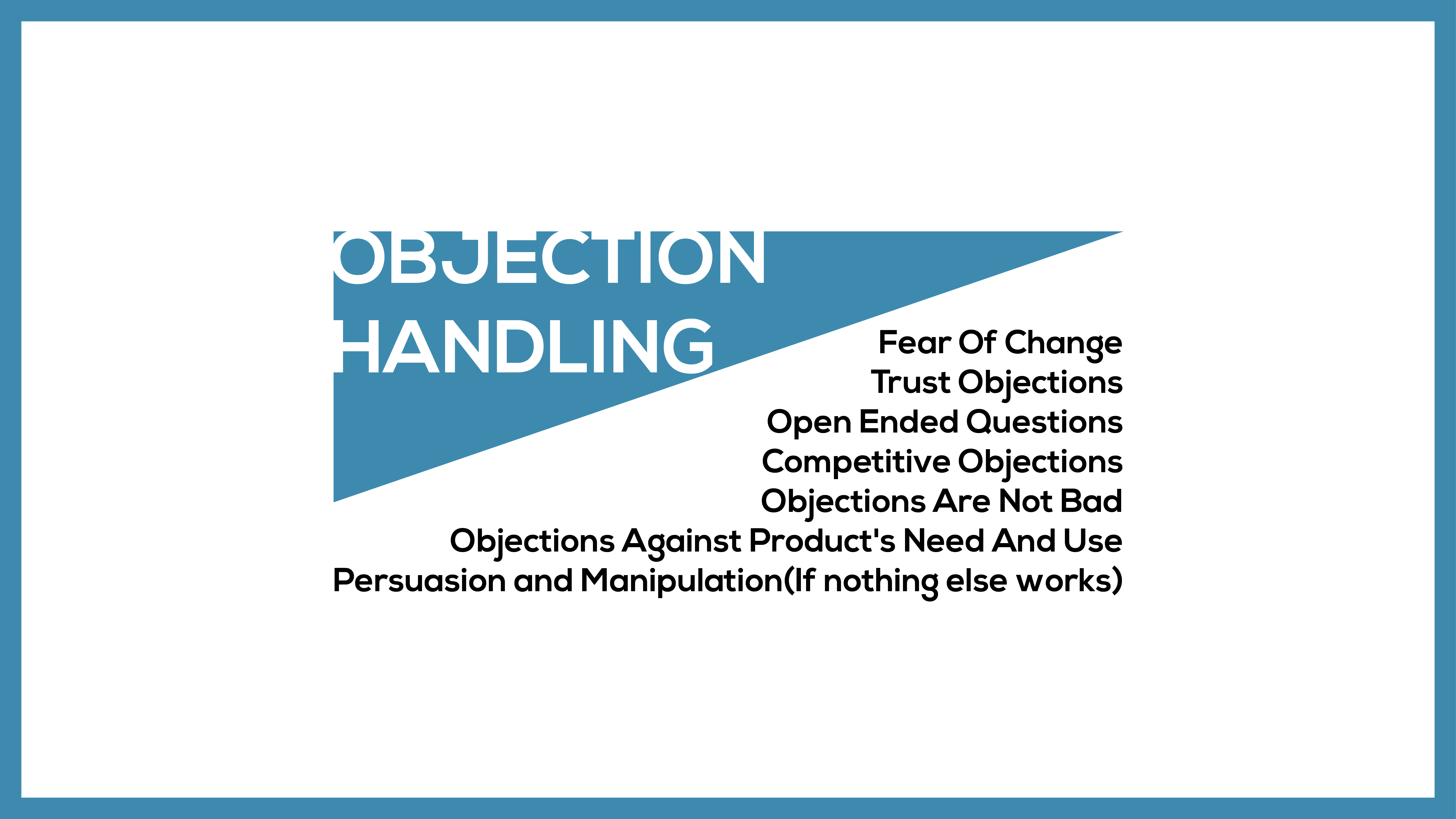A sales representative knows that during any sales process objections are evident. Otherwise, everyone would be selling products here and there. Many representatives fail to handle these objections, and end up sabotaging their rapport. Rapport is crucial to selling. This article explains how a sales rep can handle objections, and maintain rapport.
The most common way many sales representatives handle objections is through arguing. This is not something that a good salesman will have in his list. To handle objections, one must know what they are. Objections are signs that a buyer is not on the same page as the seller, but is interested in the product. They are like a series of hurdles that a seller must overcome. Something like a hurdle race, except the hurdles have varying heights. Objection handling is the art of bringing the client on the same page, and recognizing when to back off.
7 Tactics every B2B salesperson should know about objections handling.
1. Objections Are Not Bad
Many sales reps hold this opinion that objections are a bad sign. Objections are quite the opposite. They are signs of interest. Clients who have no interest will not waste time in raising questions. If a client objects it means they need a little more convincing. Many sales reps consider objections as brush-offs. There is a big difference between the two. Brush-offs are direct, and have nothing to do with the product. Rather, they have everything to do with client’s personal reasons. Knowing the difference between the two is imperative for successful sales. Most brush-offs include:
- “I’m busy.”
- “Call me another time.”
- “How did you come across my personal information?”
- “Talk to my assistant.”
Or some other variant of these. Notice that brush-offs have nothing about the product. It is a clear sign that they are not available for any negotiation right now.
2. Objections Against Product’s Need And Use
Some clients are in a position where they don’t know how they could benefit by your product. This objection circles around the need of your product. This situation demands that you explain what your product does. Emphasizing on each feature with clarity will give the client opportunities to relate. More number of relations, more the chances they land on the same page.
Another objection is that the client may not need a solution to the problem your product tries to solve. Or that problem is not on the priority shelf. Your motive should be to convince them that the problem is a pressing issue. Stick to the facts when trying to convince them of the issue.

3. Competitive Objections
A prospect might already be using another company’s product. This is not the end. They have recognized the need of the product, and seek solutions. Your job is half done. All you need to establish now is how your product is better than the one they are already using. The reason this might work is because the prospect may not be happy with the competitor’s product.
If the client is happy with the competitor’s product, ask them why. Questioning their relationship will bring weak spots out in the open. After that, your strategy is to handle those weak spots by bringing in your product’s features. The idea is to prove your product is superior than any other in the market.
Another objection could target the price of the product. Current market scenarios dictate buyer’s options. That is, buyers have more options to choose from in the market. Most people look for the value a certain product offers. If the prospect feels the price is being justified by the value it brings, they’re sold. Your motive is to justify the price of the product by the value it brings.
4. Fear Of Change
One thing that many people don’t like is change. Companies that have been following a certain way for years may prove to be difficult to sway. The only way you can try to change their mind is by showing positive results change has brought in the past. Demonstrating results through statistics is a good option. Collect resources which point towards fruitful results owing to changing strategies. This could include past clients or major corporations that have adopted a change in their strategies.
5. Trust Objections
Many-a-times clients do not trust sellers. This is because sellers fail to establish credibility from the start. Honesty and consistency are the two main components for building credibility. Sharing testimonials, case studies, and references will set you in the right path.
6. Open Ended Questions
Objection handling can only work if you uncover objections. ‘Yes’ and ‘No’ type of answers offer very little value. Asking open ended questions lets the answerer add more detail to their answer. This helps in uncovering their indirect objections. Every objection is crucial to understanding what page the client is on. You need to make sure your client is on the same page.

7. Persuasion and Manipulation(If nothing else works)
There is a high chance that many clients who hold strong to their objections will never agree with you. The only way that remains is to try and manipulate them into buying your product.
A few manipulation tactics:
A. The Boomerang Technique.
This technique uses a client’s objection against them.
For example, a client is objecting against the price of the product. That is, the product is too expensive. Put them in a situation where buying cheap products will make them look bad.
B. The Objection Chunking
Taking a general viewpoint, and minimizing the effect of the objection.
For example, a client with less authority objects against a particular feature. Use their lack of authority against them and ask to call their manager. Or make the objection trivial against the end result, the big picture.
C. Conditional Closing
When a client offers objection, make a condition to sort the issue if they buy it.
For example, if the client is looking for a tagging feature in the product, and it does not have one.. Get the tagging feature up and running only if they agree to buy it.
There are more such tactics. Check out – ChangingMinds: Objection Handling
Conclusion
Sales is all about experimentation, observation, and action. Go out and experiment with these tactics . Do you think something is missing in this list? Give us some feedback.


